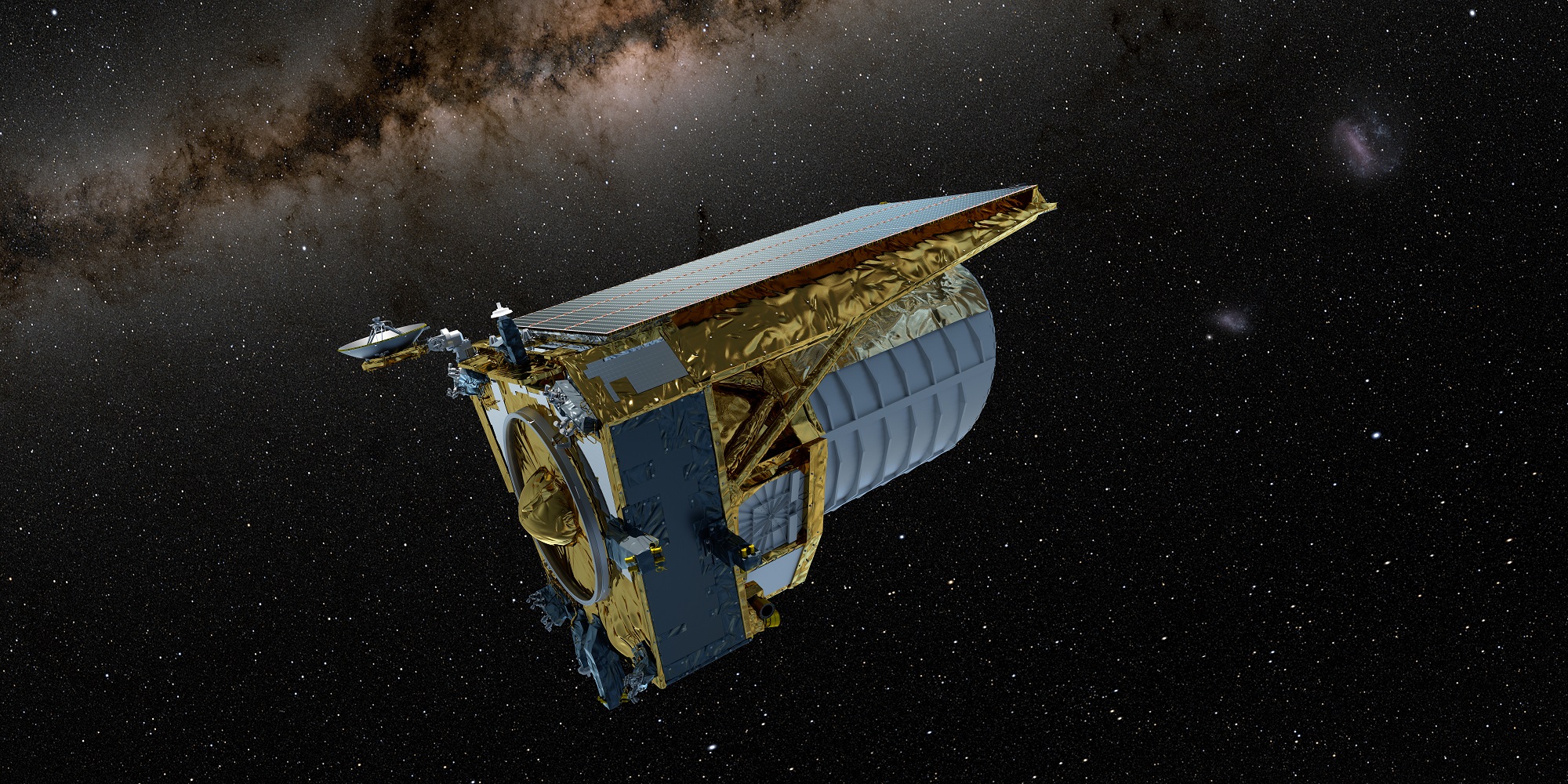From its vantage point at the Sun-Earth L2 point, the ESA’s Euclid spacecraft is measuring the redshift of galaxies with its sensitive instruments. Its first science images showed us what we can expect from the spacecraft. But the ESA noticed a problem.
Over time, less light was reaching the spacecraft’s instruments.
Euclid launched on July 1st, 2023 and made its way to the Sun-Earth Lagrange 2 point, the same spot where the JWST resides. Euclid is basically a wide-angle telescope with a 600 MB camera. Using its suite of scientific instruments, it measures the redshift of galaxies in an effort to understand the accelerating expansion of the Universe. Its measurements support the mission’s main science goals: to understand dark matter and dark energy.
Euclid released its first images in November 2023. To describe them as dazzling was not an exaggeration. Those images whetted our appetite for more and built anticipation for the science results to come.

But as time went on, a problem common to spacecraft cropped up. Water vapour from Earth had accumulated on the spacecraft during construction. Over time, the water was released from different parts of the spacecraft by the vacuum of space. The water attached to and froze to the first object it came into contact with. Some of it froze into a thin layer of water ice on VIS, the telescope’s visible wavelength camera. The layer was no thicker than a strand of DNA, but the sensitive instrument was nonetheless impaired.
Euclid personnel couldn’t see the ice. Instead, they observed a growing decrease in the amount of light reaching VIS. VIS is extremely sensitive and is designed to deliver the best low-light sensitivity ever achieved over a broad range of wavelengths. But that sensitivity to light also makes it very sensitive to even a small drop in starlight caused by the thin film of ice.
ESA personnel spent months trying to devise a method of removing the ice, and on March 19th, they started implementing their plan.

Euclid has six different mirrors that collect light and deliver it to VIS and NISP, the Near-Infrared Spectrometer and Photometer. The team in charge of dealing with the ice problem devised a way to heat the spacecraft without compromising the instruments’ sensitivity. They planned to heat the mirrors one by one, and after the first mirror was warmed by 34 degrees F, the ice melted away.
“It was midnight at ESOC mission control when we de-iced the first two mirrors in the procedure. We were very careful with our timings, ensuring we had constant contact between the spacecraft and our ground station in Malargüe, Argentina, so we could be ready to react in real-time if there were any anomalies,” explained Micha Schmidt, Euclid Spacecraft Operations Manager.
“Thankfully, it all went as planned. When we saw the first analysis provided by the science experts, we knew that they would be very happy – the result was significantly better than expected,” Schmidt said.
“It was an enormous team effort over the last months to plan, execute and analyze the heating of selected mirrors onboard Euclid, resulting in the fantastic result we see now,” explained Ralf Kohley, Euclid Instrument Scientist and in charge of the anomaly review board.

Since the light collection improved on the first attempt, the success also showed mission personnel exactly where the ice was and where it’s likely to collect in the future if the problem crops up again.
“The mirrors and the amount of light coming in through VIS will continue being monitored, and the results from this first test will continue to be analyzed as we turn this experiment into a core part of flying and operating Euclid,” Kohley said.
With this problem behind it, Euclid can now get back to work. Its goal is to measure galaxies out to redshift 2. This corresponds to looking back in time by 10 billion years. The spacecraft will do it gradually, measuring the shapes of galaxies and their corresponding redshifts. The spacecraft will also measure how their light is distorted by dark matter. Eventually, the telescope will measure the amount of dark matter and compare its statistical properties to those of the galaxies. Critically, it will measure them over long periods of time, leading to an understanding of how both change over time and a better understanding of dark matter, dark energy, and the acceleration of the expansion of the Universe, the spacecraft’s main scientific goal.
But none of that work can continue if the telescope can’t see properly. Even the thin film of ice impaired Euclid’s observations enough that it was a serious obstacle to progress.
Now that the ice is gone, Euclid can get back to work. And if the problem reappears, the Euclid team is ready to deal with it.
“We expect ice to cloud the VIS instrument’s vision again in the future,” explained Reiko Nakajima, VIS instrument scientist. “But it will be simple to repeat this selective decontamination procedure every six to twelve months and with very little cost to science observations or the rest of the mission.”

